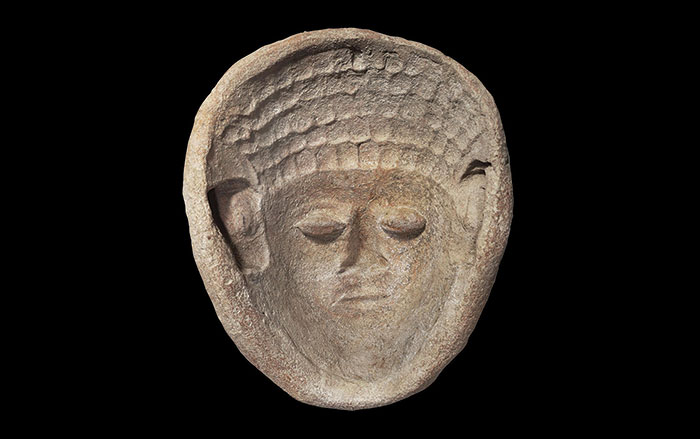
NEW ZEALAND

NEW ZEALAND: The remains of a Maori village dating to between 1600 and 1800 were recently uncovered during a road construction project near Papamoa on the country’s North Island. Several hundred archaeological features of the settlement were exposed, including crop storage pits, cooking pits, and postholes from several large Maori communal houses known as whares. The discovery is not only providing researchers with new insights into the layout and organization of native communities, but is also revealing aspects of daily life. —Jason Urbanus

VIETNAM

VIETNAM: A grinding stone used to shape, repair, and maintain stone axes attests to the unexpected presence, some 3,500 years ago, of specialized toolmakers at the southern Vietnamese site of Rach Nui. Previously it was thought that the manufacture of stone tools only occurred near the sources of material, but the closest quarry to Rach Nui is 50 miles away. Researchers now believe a sophisticated Neolithic trade network enabled raw materials to be imported into Rach Nui, where they were crafted into finished products. —Jason Urbanus
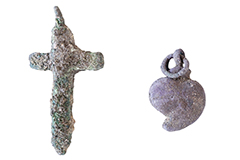
ZANZIBAR

ZANZIBAR: For the past 1,000 years, African, Arab, and European traders have fought over this island because of its key location along Indian Ocean trade routes. Although it was under the control of the Portuguese during the 15th and 16th centuries, until recently very little evidence of their occupation was apparent. But now, beneath Stone Town’s old fortress, archaeologists have unearthed the ruins of a large Portuguese church and the burial of a priest, identifiable by his sacred heart brooch, ring, and small crucifix. —Jason Urbanus

JORDAN

JORDAN: In A.D. 749 the city of Jerash was hit by a devastating earthquake. The temblor just happened to strike at a time when the owners of the so-called House of the Tesserae were in the midst of renovations. The property was subsequently abandoned, with work on the house never completed. It has now been discovered that one room had been temporarily converted into storage for construction materials and contains thousands of pristine white marble tesserae intended for the house’s new mosaics. —Jason Urbanus
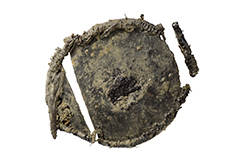
SWITZERLAND

SWITZERLAND: A Late Bronze Age traveler hiking high in the Bernese Alps 3,500 years ago seems to have dropped a cereal box, which was eventually buried in the ice. Analysis of the wooden container identified lipids and preserved proteins associated with wheat and rye or barley. Seldom do the biomarkers of plants survive in ancient storage vessels, so, with this new discovery, researchers are hoping to gather valuable information about the early use, cultivation, and spread of cereals in Europe. —Jason Urbanus
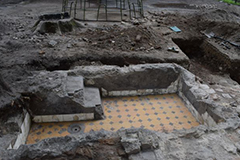
LITHUANIA

LITHUANIA: Two ritual baths once belonging to the Great Synagogue of Vilna have been rediscovered. The massive synagogue complex was completed in 1636 but was looted and burned by the Nazis during World War II and torn down shortly thereafter by Soviet authorities. Because 17th-century laws did not allow the synagogue to be built higher than the city’s churches, the demand for space required the building to contain substantial subterranean levels, where the partially preserved baths are located. —Jason Urbanus

GERMANY

GERMANY: Today, Norwegian-caught cod is a commodity shipped around the world. Apparently, it was popular some 1,000 years ago, too, when Viking traders transported freeze-dried cod around Europe. DNA testing of fish remains from the Viking Age (800–1066) site of Haithabu indicates that they belonged to an Arctic population known to have lived exclusively off the coast of northern Norway, 1,000 miles away. This find predates the earliest known archaeological or historical evidence for the export of dried cod by several hundred years. —Jason Urbanus
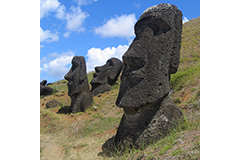
CHILE

CHILE: The collapse of Rapa Nui’s (Easter Island) population is a long-standing mystery, often attributed to the loss of terrestrial food sources and overexploitation of natural resources. However, a new study shows that the islanders were actually able to adapt to the harsh ecological conditions. Analysis of human, faunal, and botanical remains dating to around 1400 indicates that marine sources comprised an unexpectedly large part of the islanders’ diet, and that they were also capable of manipulating the nutrient-poor soil to increase its fertility. —Jason Urbanus
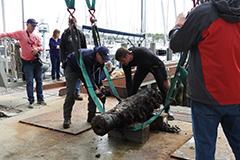
RHODE ISLAND

RHODE ISLAND: During the War of 1812, naval commander Oliver Hazard Perry was known as the “Hero of Lake Erie.” But the year before the war’s outbreak, he was captain of USS Revenge, which hit a reef and sank off the coast of Westerly. For nearly two centuries, the site of the wreck was unknown, until recreational divers located it a decade ago. Now, U.S. Navy divers have finally raised one of the ship’s 1,000-pound cannons. It will undergo laboratory analysis to confirm its provenance. —Jason Urbanus
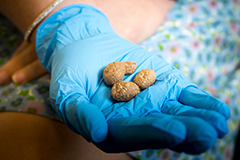
UTAH

UTAH: Potato starch residues found on 10,900-year-old stone grinding tools from the North Creek Shelter site may be the oldest known evidence of potato domestication and consumption in North America. The granules belong to a species known as the Four Corners potato, which is native to the southwestern United States, although rare today. In Utah’s Escalante Valley, they are found exclusively around archaeological sites, suggesting these tubers were an important part of prehistoric human diets in the area. —Jason Urbanus










